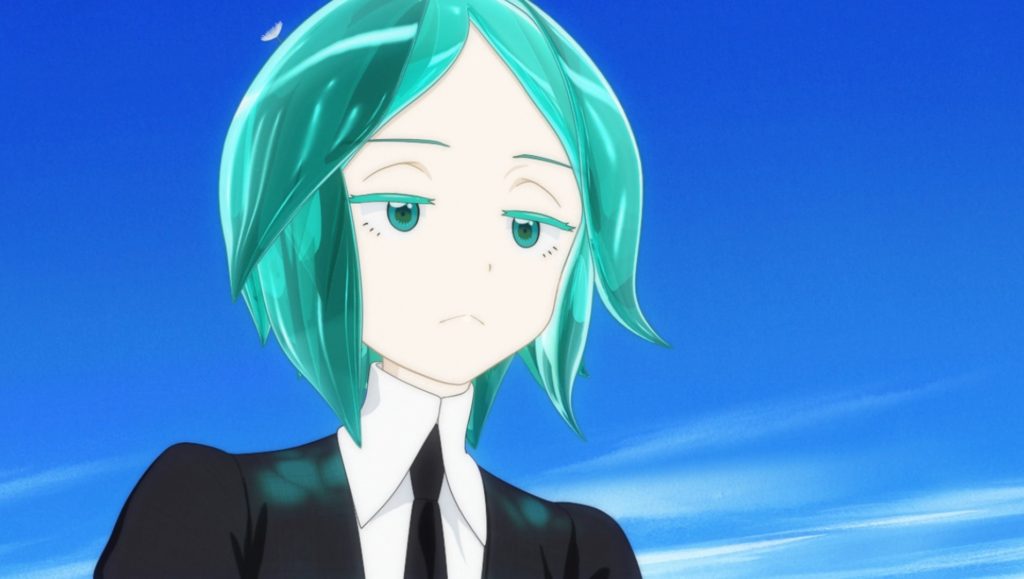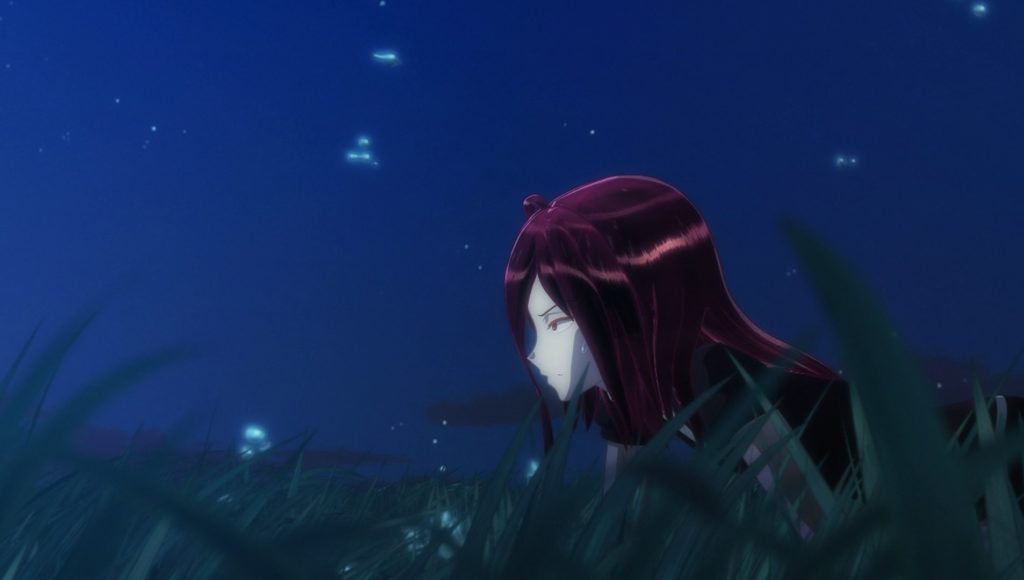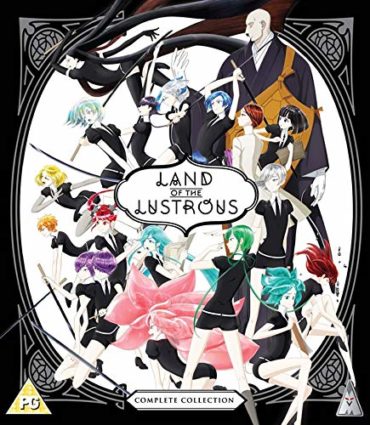Land of the Lustrous Review
When reviewing the original manga of Land of the Lustrous for AUKN back in 2017, I commented that while the original print may look sketchy and simplistic, its premise of glittering, colourful gemstone-like people might make it one of those cases where the anime adaptation works better than the original manga.
It looks as if I was right. When the anime version of Land of the Lustrous aired later that year, it became one of the big talking points at the time. Many critics named it the best anime of the season, it won several awards, and the visuals were one of the big talking points. According to several critics, it became the first anime to use CGI well.
Set in the far future, the world is now inhabited by the “Lustrous”, a race of beings with crystalline bodies made out of gems, all having dazzling, jewel-like hair. Over the centuries, the world has been hit by six meteors, which have formed moons. On these moons live the “Lunarians”, a race of giant creatures who come to the world to attack and kidnap the Lustrous to turn into decorations, and whom the Lustrous must fight off.

The central figure is a Lustrous named Phosphophyllite, or “Phos” for short. Phos wants to join in the fighting, but Phos only has a hardness rating of 3.5 on the Mohs scale and is thus brittle, easily breaking up in any fight. Fortunately, the Lustrous are easily healed, with the medical expert Rutile being able to put the Lustrous back together again if all the broken bits are available, but if any part of their body goes missing, then that Lustrous will also lose part of their memory.
The leader of the Lustrous, a monk named Kongo, decides that the best way to use Phos is to get them to compile an encyclopaedia of the world. While working, Phos tries to meet a secretive Lustrous named Cinnabar, who works alone at night. Cinnabar is even more brittle than Phos, but makes up for it by secreting a form of poison that can damage the Lustrous. However, it means that Cinnabar has to stay apart from everyone else. After Phos tries to help Cinnabar in a fight, Cinnabar complains about ruining everything by poisoning everything around. So Phos promises to try and help Cinnabar by finding them a more fun job.

While trying to do this, Phos also interacts with other Lustrous in order to compile the encyclopaedia, such as the kind-hearted, strong but brittle Diamond – “Dia” for short, and Dia’s even tougher sibling Bort. However, Phos continues to end up in more battles, becoming damaged in the process. With parts of Phos’s body going missing or being stolen by Lunarians, Phos manages to end up with substitutions that actually make them a stronger body – at the cost of their memory. Phos can now fight, but this comes at a personal cost.
The animation is the most appealing aspect of the series, in particular the use of CGI. Most previous attempts to use this in anime have been relatively unsuccessful, seeming less fluid in terms of the motion of the characters, especially when they talk. While you can still see some clunkiness when the character speak, it is not as bad as in other series. Plus, when it comes to other aspects, Land of the Lustrous literally shines. For example, thanks to the jewel hair of the characters, when the light shines you can see different shades of light reflect off the clothes of the characters. There are other moments in the action sequences such as smoke effects, and body parts turning into liquid that are also visually stunning. Sometimes the effects are more comical – for example, a snail pooing seeds.

Other enjoyable aspects of this anime include the drama. Phos goes through a lot – both emotionally and physically. Phos’s appearance changes over the course of the series as new body parts give them stronger powers. However, our lead has to experience several tragedies, such as seeing other Lustrous being taken away by the Lunarians. Phos starts off being laid-back and full of joy, but by the end of the series the character has become much more serious. The only downside of the drama is that the series ends with some aspects left unresolved (namely just over the first four of currently nine volumes of manga were adapted), but hopefully this means there might be more of Land of the Lustrous in the future.
On the discs themselves, the Japanese dub feels stronger than the English dub – part of me wonders whether having the English dub performers describing Kongo as “Sensei” is less effective than it is when it is coming from the Japanese actors. You also get subs and dubs in Spanish too. The only extras are of textless opening and closing, but the soundtrack by Yoshiaki Fujisawa is also one of the plus points of this anime. Both songs, “Kyomen no Nami” by Yurika and “Kirameku Hamabe” by Yuiko Ohara are wonderful.
In terms of style, Land of the Lustrous stands out as a key-point in the development of using CGI in anime. Hopefully, there will be more episodes in the future to see this style return.


